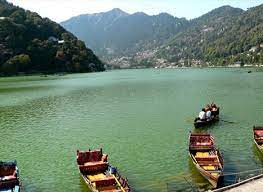Embarking on an Adventure: Rishikesh to Jim Corbett Journey
In the heartland of Uttarakhand, India, where the Ganges River flows with divine grace, and the Himalayan foothills whisper tales of adventure, the journey from Rishikesh to Jim Corbett National Park unfolds like a page from a traveler’s dream. Join me as we traverse through the scenic landscapes, bridging the spiritual aura of Rishikesh with the untamed wilderness of Jim Corbett.
Rishikesh: The Gateway to the Himalayas
Our expedition begins in Rishikesh, often referred to as the ‘Yoga Capital of the World.’ Nestled on the banks of the Ganges, this spiritual haven captivates with its ashrams, ancient temples, and the rhythmic chants echoing across the river. Before venturing into the wild, take a moment to absorb the serenity that envelops Rishikesh.
For the adventurous soul, Rishikesh offers an array of activities. The thrill-seekers can indulge in white-water rafting through the turbulent Ganges rapids, while those seeking inner peace can partake in yoga and meditation sessions overlooking the majestic mountains.

The Scenic Drive to Jim Corbett: A Tapestry of Nature
Leaving the spiritual vibes of Rishikesh behind, the road trip to Jim Corbett National Park unfolds like a visual feast. The winding roads carve through lush greenery, offering panoramic views of the Shivalik Range. As you ascend, the air becomes crisper, and the Himalayan peaks play hide-and-seek with the clouds.
En route, make a pit stop at Garjia Devi Temple, perched on a large rock amidst the Kosi River. The temple, dedicated to the goddess Garjia, provides not only a spiritual pause but also panoramic views of the surrounding landscape.
Into the Wild: Jim Corbett National Park
Arriving at the gateway to the Indian wilderness, Jim Corbett National Park, the air buzzes with anticipation. Named after the legendary hunter and conservationist Jim Corbett, this national park is a haven for wildlife enthusiasts. The landscape is a canvas painted with sal forests, grasslands, and the Ramganga River meandering through.
Embark on a safari through the Dhikala Zone, where the thrill of encountering the majestic Bengal tiger awaits. The park, rich in biodiversity, hosts a myriad of species, from spotted deer to exotic birdlife. The elusive leopard may cast a watchful eye from the treetops, and the trumpeting of elephants may resonate through the jungle.
Conservation and Eco-Tourism: A Shared Responsibility
Jim Corbett National Park stands as a symbol of India’s commitment to wildlife conservation. Conservation efforts and eco-tourism initiatives here showcase a delicate balance between human presence and the preservation of the natural habitat. Responsible tourism ensures that future generations can witness the splendor of these wild landscapes.
Conclusion: A Journey of Contrast and Harmony
The road from Rishikesh to Jim Corbett National Park is a transition from spiritual tranquility to the untamed beauty of the wild. It’s a journey that seamlessly blends the calming echoes of the Ganges with the primal roars of the jungle. As you bid adieu to the national park, the memories of this odyssey linger—a tapestry woven with spirituality, adventure, and the timeless allure of nature.


